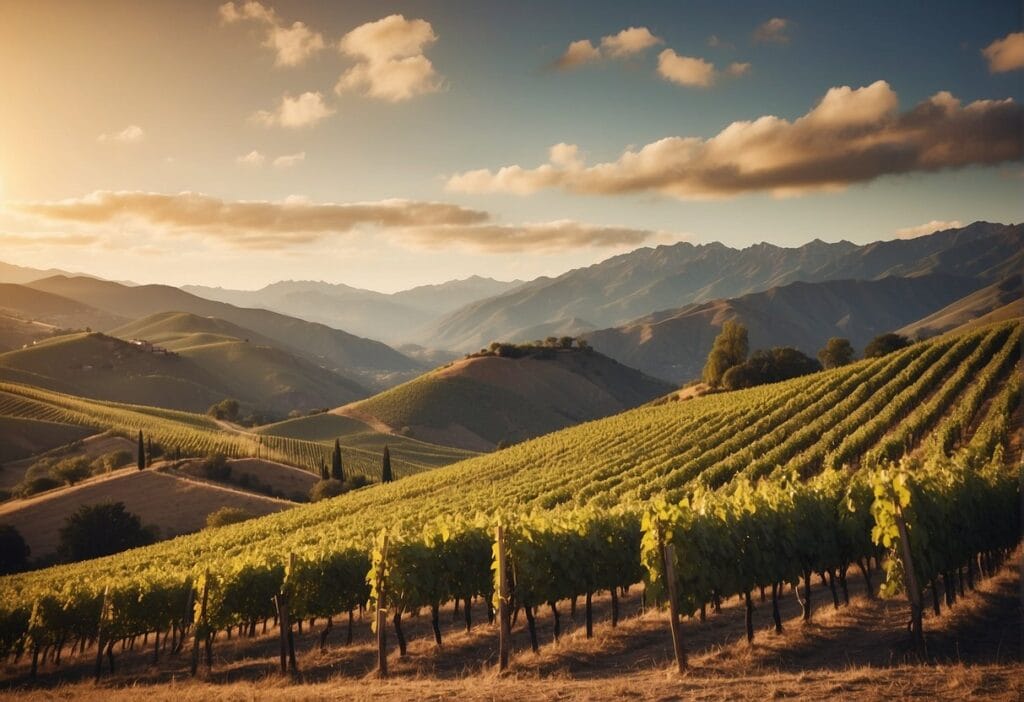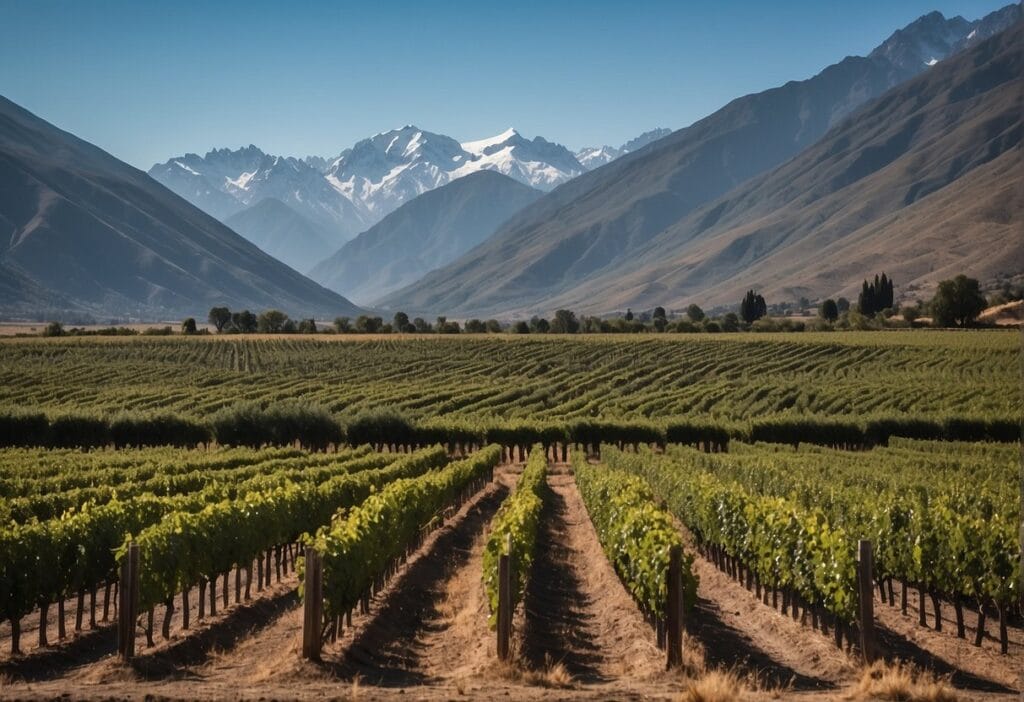India’s burgeoning wine industry is becoming a notable player on the global stage. Both connoisseurs and curious enthusiasts are invited to explore its verdant vineyards and diverse wines.
As you journey through the vast subcontinent, you’ll find that the Indian wine regions offer a unique blend of traditional viticulture methods and modern innovations. These regions are carving a niche for themselves with distinct varietals and winemaking techniques shaped by the country’s varied climate and terrain.
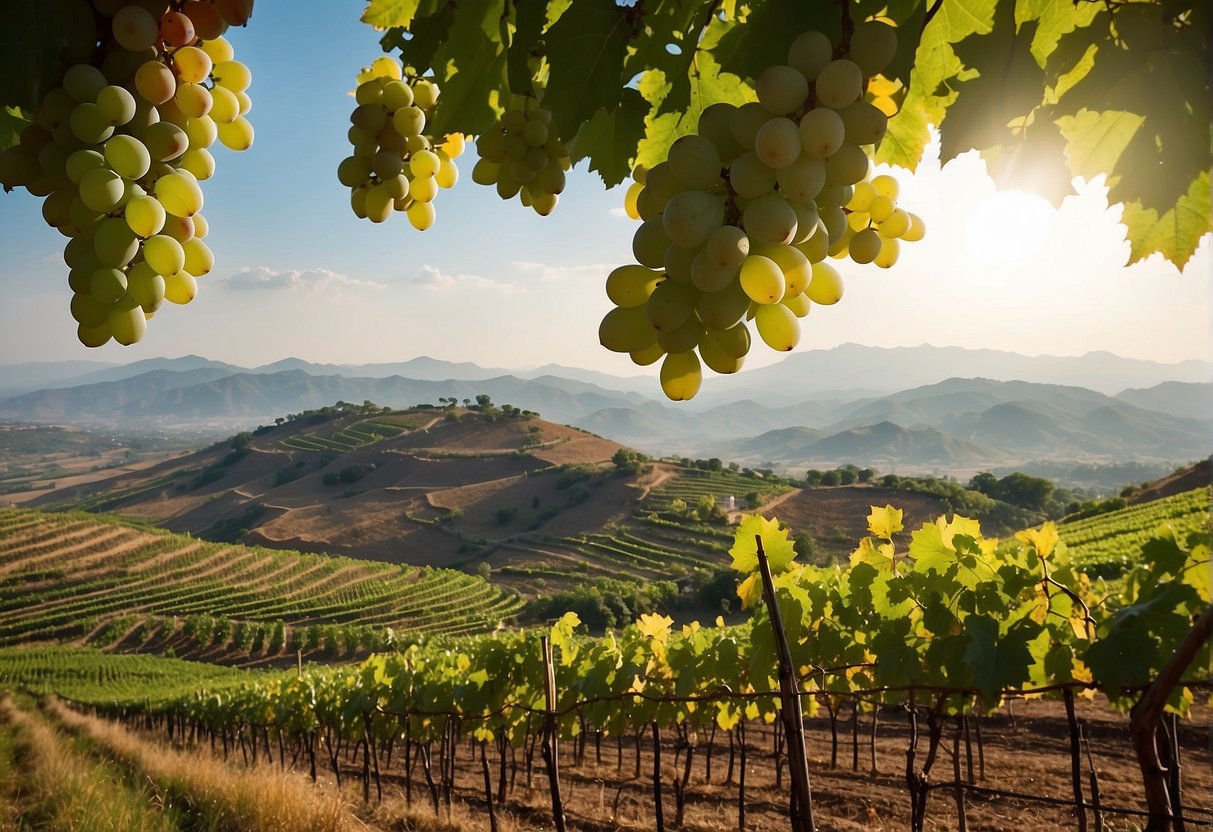
Maharashtra, particularly the areas around Nashik and Pune, has emerged as the wine capital of India, paving the way for the industry’s growth and development. Karnataka, with its flagship wineries around Bangalore and the Hampi Hills, is also a key player in shaping the wine culture of South India.
Alongside these, the distinct climates of regions like the Nandi Hills and the Krishna Valley contribute to the diverse flavor profiles of Indian wines, accentuating their uniqueness.
Key Takeaways
- India’s diverse climates contribute to the unique profiles of its wines.
- Maharashtra’s Nashik and Pune stand out as central wine regions.
- Karnataka is instrumental in cultivating the wine culture in South India.
Overview of Wine Regions in India
India’s diversity in climate, soil, and geography makes its wine regions distinct. Remarkable for their varied terroirs and unique historical influences, these wine-producing areas are becoming increasingly significant in the global wine landscape.
Characteristics of Indian Terroir
Climate and Rainfall: In India, your wine grapes are cultivated under a monsoon-influenced climate, which brings abundant rainfall during the wet season. The timing of monsoons is crucial, as post-monsoon harvest is preferred.
The Deccan Plateau and Western Ghats significantly impact the climate, sheltering some regions from heavy rains and fostering favorable winegrowing conditions.
Soil Types and Altitude: Varying altitudes across wine regions, especially those near hills like the Western Ghats, provide a range of microclimates. You’ll find soils ranging from volcanic to red loamy, each lending its unique profile to the Indian wine you enjoy. Optimal altitude ensures cooler nights which are beneficial for grape quality.
The Impact of Geography on Wine Production
Wine regions in India leverage their geographical diversity to produce a spectrum of wines. The Western Ghats offer slopes and hills that facilitate good drainage, while the River Godavari in regions like Nashik provides irrigation essential for vineyards.
Geographical features shape the character of Indian wine, dictating the specific varietals and types of wine that thrive in each region.
Historical Development of Wine in India
From ancient connections to Persia, where vines were first brought into the subcontinent, to a tumultuous history with Islamic dietary laws and prohibition impacting production and consumption, Indian wine has a storied past.
The industry experienced a renaissance after grappling with Phylloxera and import restrictions. Once an elite commodity, Indian wine is now enjoying a growing popularity and is carving out its space in the international wine community.
Major Wine Regions in Maharashtra
As you explore Maharashtra’s wine regions, you’ll discover that the state is pivotal to India’s burgeoning wine industry, boasting significant wine production zones like Nashik and Pune.
Nashik: The Wine Capital of India
Nashik, known as the Wine Capital of India, is a cradle for the burgeoning wine scene. With its favorable climate and fertile soil, Nashik is ideal for quality viticulture.
Here you’ll find Sula Vineyards, a pioneering winery that has played a crucial role in placing Indian wines on the global map. The proximate Gangapur Dam region offers scenic backdrops and fertile lands contributing to the region’s reputation as a premium grape-growing area.
Nashik’s Dindori area is also emerging as a wine production hub, with its unique terroir reflecting in the distinct flavor profiles of the wines produced.
Pune and Its Surrounding Vineyards
The wine region around Pune is marked by its vibrant winemaking activities, with the area around Baramati hosting reputable vineyards.
This historical and culturally-rich city is close to Chateau Indage, one of the first wineries to put India on the vintners’ map with its wide variety of wines. Pune’s moderate climate and rich soil contribute significantly to the viticulture potential, nurturing vineyards that produce wines with unique characteristics, appealing to both novices and connoisseurs alike.
Key Players in the Indian Wine Industry
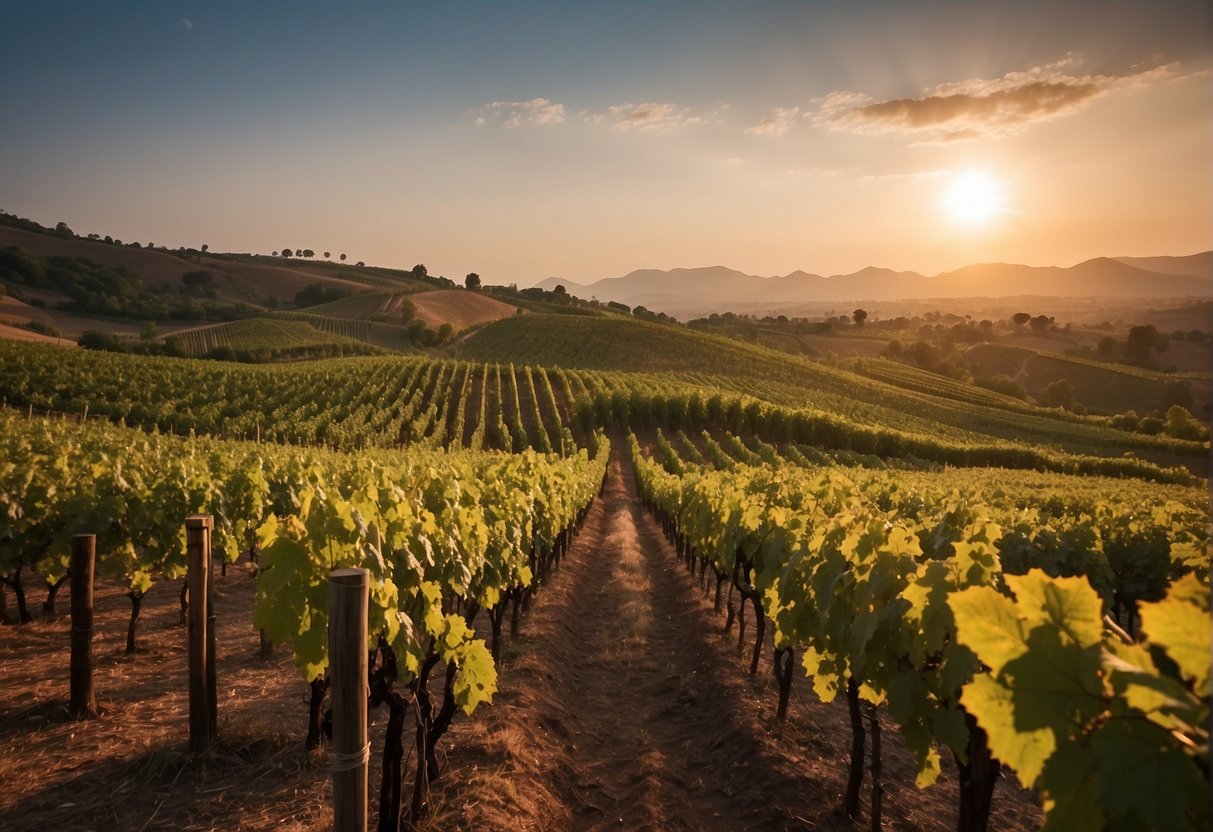
The Indian wine industry has seen a rapid ascent, with a few key players significantly shaping its growth and the wine culture within India. These wineries have marked their presence not just in domestic markets, but also in the international wine scene.
Sula Vineyards’ Dominance
Sula Vineyards, stationed in the region of Sangli, holds the position of the pioneer in the Indian wine industry. With its foundations laid in the late ’90s, Sula introduced varietals such as Sauvignon Blanc and Zinfandel to Indian soil, and quickly rose to the top thanks to their savvy business practices and a wide range of wines that appeal to both novices and connoisseurs.
Dominating with a comprehensive market share, Sula has become synonymous with Indian Wines.
Grover Zampa’s Contributions
A name that resonates with wine lovers is Grover Zampa, one of the oldest purveyors of fine wines in India. Nestled amidst the lush landscapes of Nandi Hills and the Akluj region, Grover Zampa has mastered the art of wine production using exquisite grape varieties like Shiraz and Viognier.
The winery has engineered top-notch wines that have garnered both national and international acclaim.
New Entrants and Boutique Wineries
While Sula and Grover Zampa lead the pack, a cluster of new entrants and boutique wineries are carving their niche in the Indian wine landscape.
York Winery, set near Sula in Nashik, is growing as a formidable force, noted for its dedicated vineyard practices and an impressive array of wines, including the varietal Muller Thurgau.
These boutique players are vital in bringing a fresh perspective to the vineyards of India, creating a diverse and dynamic wine scene.
Wine Tourism and Culture in South India
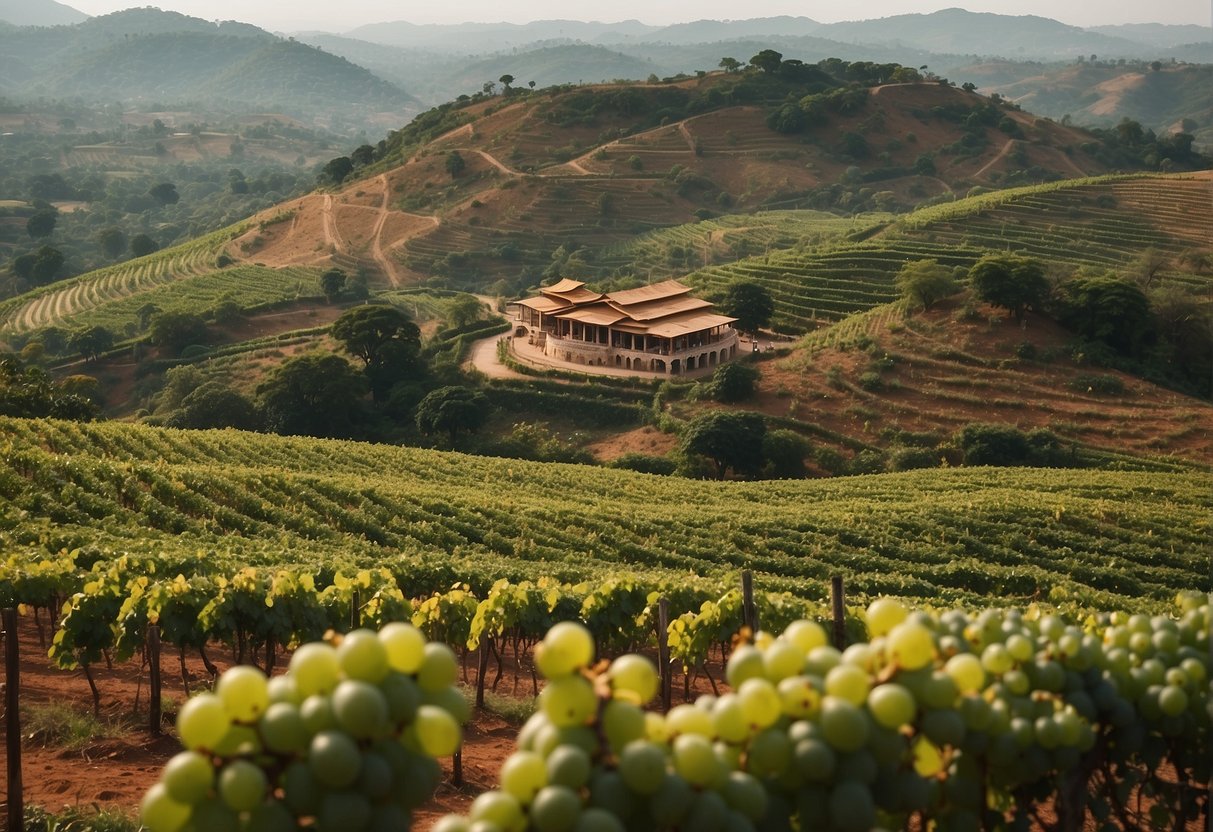
South India has become a vibrant hub for wine tourism, blending traditional viticulture practices with modern celebrations. If you’re a wine enthusiast, you’ll find the regions of Karnataka and the picturesque Nandi Hills particularly intriguing, offering a glimpse into the burgeoning wine culture of the South.
Wine Tourism in Karnataka and Nandi Hills
Karnataka, often referred to as the Wine Capital of India, is a must-visit for anyone interested in the subcontinent’s wine scene.
In the serene backdrop of the Nandi Hills, near Bangalore, lies a thriving wine tourism industry. Here you can stroll through lush vineyards, participate in wine tasting sessions, and learn about the winemaking process.
The area is particularly known for its Bangalore Blue grape variety, which is a descendant of the renowned Isabella grape.
Local vineyards often provide tours where you experience firsthand how the unique geography and climate of the South contribute to the distinct flavors of Karnataka’s wines.
The terrains here, rich in history and natural beauty, offer an idyllic setting for enjoying the local vintages.
Viticulture Practices and Wine Celebrations in the South
Viticulture in the South is steeped in tradition yet has adapted to incorporate modern techniques. The result is a range of high-quality wines that are gaining recognition both in India and internationally.
Festivals and harvest celebrations are common, where you can immerse yourself in the wine culture of the South.
They represent an exciting integration of local customs and the communal spirit of wine-making and tasting.
These festive events are excellent opportunities for you to taste various wines and mingle with like-minded enthusiasts.
Wine festivals in the South are vibrant affairs, often featuring live music, dance, and a plethora of local cuisine paired exquisitely with locally produced wines.
Varietals and Winemaking Techniques
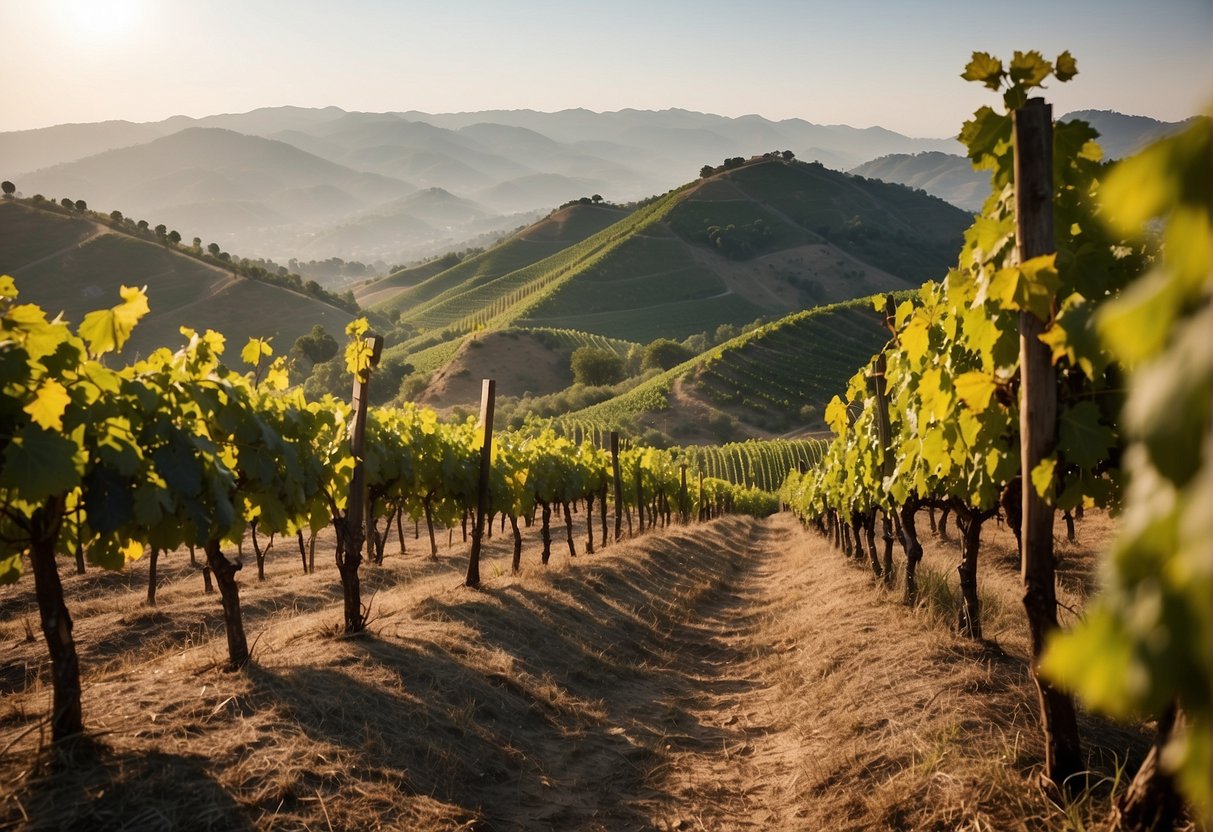
As you explore the world of Indian wines, you’ll find a fascinating blend of traditional grape varieties paired with innovative winemaking techniques that cater to both local and international palates.
Popular Grape Varieties in Indian Vineyards
Indian vineyards showcase a dynamic range of grape varieties, each bringing its unique profile to the wines produced.
Notably, international varieties such as Cabernet Sauvignon, Merlot, and Chardonnay are cultivated alongside Shiraz and Sauvignon Blanc, creating a diverse offering that competes on the global stage.
Indian winemakers also nurture indigenous grapes like Gulabi, experimenting with blends that highlight the local terroir.
In terms of white wines, Chenin Blanc and Sauvignon Blanc are prevalent, known for their crisp and refreshing qualities.
For those interested in red wines, Shiraz and the rich, velvety Cabernet Sauvignon stand out.
Sparkling wine enthusiasts might be intrigued by local interpretations made from Chenin Blanc and Chardonnay, displaying India’s potential in crafting bubbly that can surprise and delight.
Winemaking Process and Innovations
The winemaking process in India combines age-old traditions with modern innovations.
At its core, Indian winemaking follows a meticulous cultivation of grapes during the Growing Season and employs both High Altitude Winemaking and the suitable Tempranillo or Riesling in cooler climates.
The strategic use of various grape varieties like Isabella and Thompson Seedless ensures a wide portfolio of styles and tastes.
Once the grapes are handpicked, careful Winemaking practices commence.
These practices incorporate both stainless steel and oak barrel aging to enhance complexity.
The increase of high-quality Sparkling Wines production is a testament to India’s adoption of progressive techniques like methode champenoise.
Additionally, the production of late-harvest wines and ice wines shows India’s winemaking adaptability and ambition to produce diverse wine styles for an evolving market.
Climate and Environmental Factors
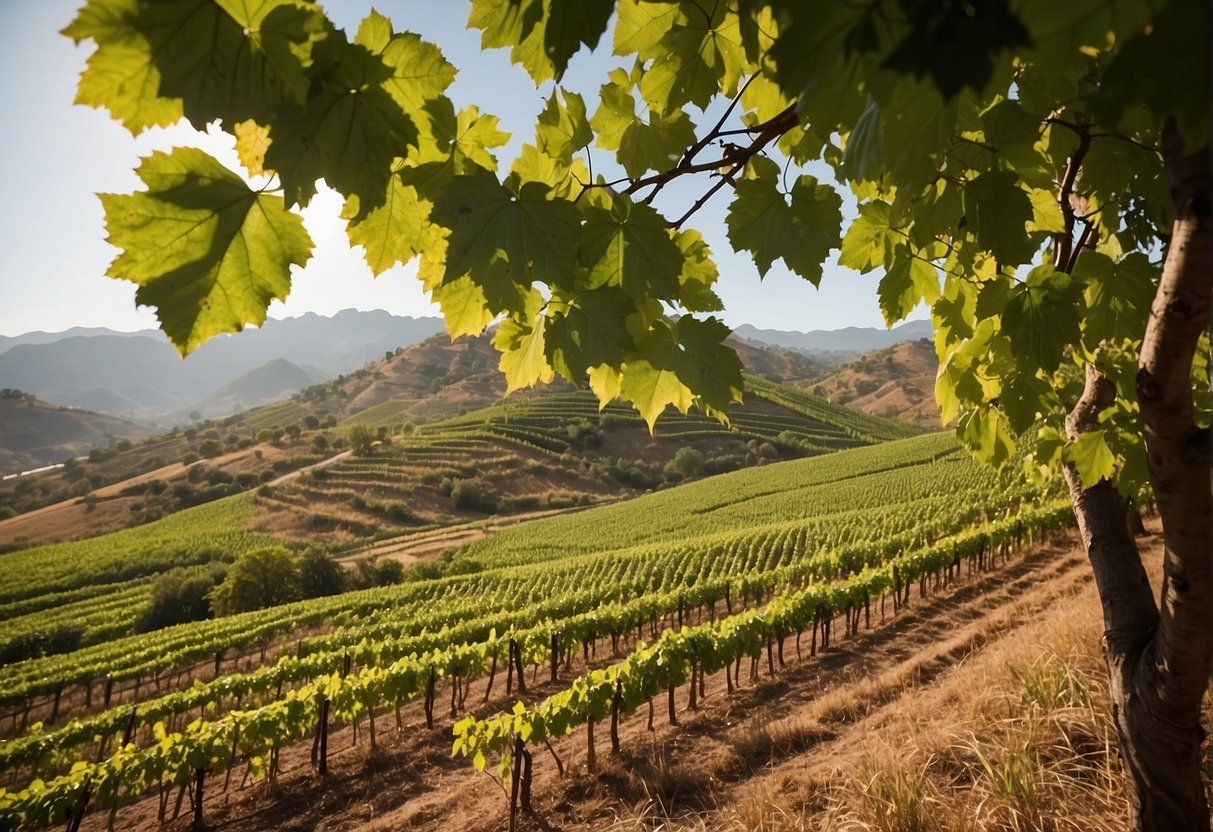
In India’s wine regions, your experience with wines is deeply influenced by distinct climate patterns and environmental conditions, which are unique due to the country’s diverse geographic profile.
Influence of Monsoon and Humidity
The monsoon period greatly affects the wine grape’s growth cycle, determining the timing of harvest.
You’ll find that the high levels of humidity during the monsoon can challenge grape growers due to the increase in fungal diseases, which can compromise grape quality.
In response, vineyards in areas with heavy rainfall, such as the southwestern region of India, often schedule their harvests to beat the pre-monsoon showers, ensuring grape integrity.
Adaptation to Local Climate Conditions
Adaptation strategies are essential for vineyards to maintain the balance of sugar, acid, and secondary compounds essential for high-quality wine production.
In parts of India where the tropical climate dominates, grape growers may opt for canopy management practices to offset excessive sunlight and heat.
Such practices contribute to the local terroir, which reflects in the final wine.
Those situated at high altitude locations leverage cooler temperatures, which can slow down the ripening process and enhance the flavor profile of the grapes.
Additionally, soil pH levels in Indian wine regions are monitored closely as they have a direct impact on the health of the vines.
Economic Aspects and Market Dynamics
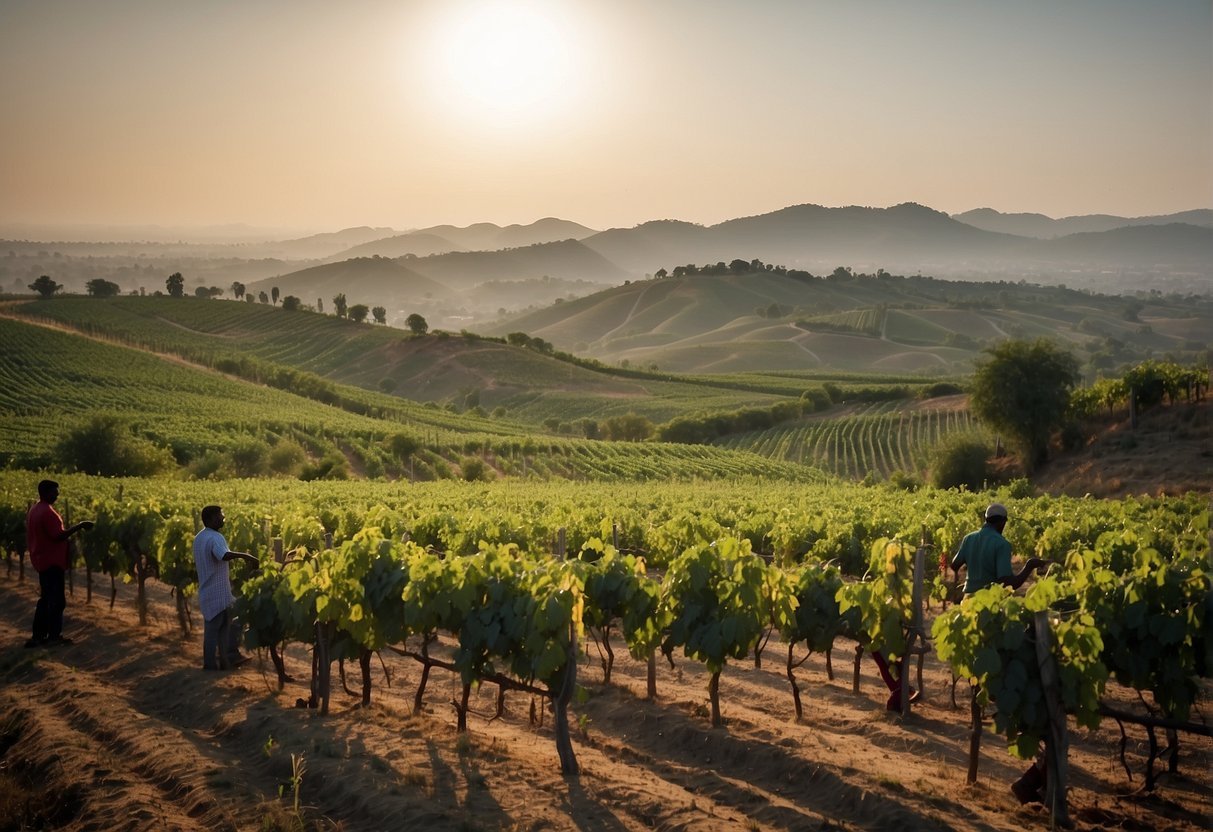
Explore the intricate dance between the domestic preferences that shape the Indian wine industry and the international forces influencing its global positioning.
Domestic Consumption and Preferences
The Indian Wine Industry has seen a surge of interest from the middle class, with a significant rise in domestic consumption.
You’ll find that wine is slowly becoming a beverage of choice, reflecting an embrace of lifestyle changes and an increased health consciousness.
Yet, production is not just about the wine; raisins are a vital byproduct, contributing substantially to the domestic market.
Notably, there has been a 29% increase in wine consumption in India in 2022, highlighting the shifting preferences and growth in the industry.
Exports, Imports, and Global Positioning
Despite an increase in domestic wine consumption, India’s role on the world wine scene remains primarily as an importer.
However, the Indian wine economy is progressively becoming a significant player due to intriguing wines that have begun to garner international attention.
- Imports: Fuelled by demand, wine imports have been pivotal in satisfying the palates of Indian consumers.
- Exports: Indian wines have yet to make a substantial impact in exports, but strides in quality are positioning India as a noteworthy entrant in the global market.
Your understanding of India’s wine landscape is not complete without recognizing the economic challenges from high taxes and regulations, which have a pronounced effect on both imports and exports.
Challenges and Opportunities in the Indian Wine Sector
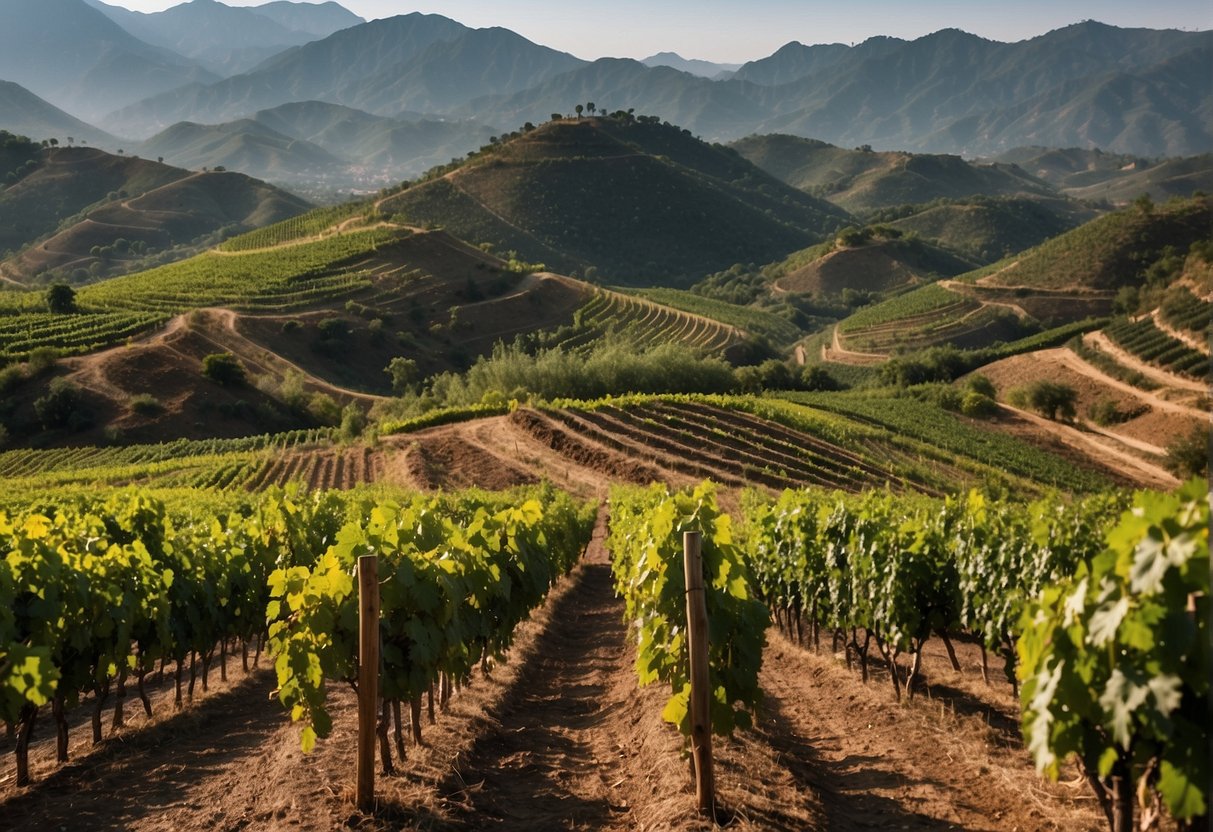
The Indian wine sector presents a complex tapestry of challenges and opportunities shaped by its unique climate, evolving legal frameworks, and the inherent characteristics of the wine market. Your awareness of these factors is pivotal to navigating the industry successfully.
Vineyard Management and Labor
Cultivating vineyards in the Indian subcontinent requires a deep understanding of local conditions.
States like Maharashtra and regions like Kashmir, Himachal Pradesh, and Tamil Nadu offer suitable climates for viticulture, making them prominent wine-producing areas.
Nonetheless, agricultural practices and sourcing skilled labor can be challenging.
Employing effective vineyard management strategies and modernizing practices are necessary to overcome obstacles and encourage industry growth.
Legal Landscape and State Regulations
The legal landscape of wine production and sales in India is complex.
With prohibition still in effect in certain areas, and each state such as Punjab, Goa, Telangana, and Andhra Pradesh applying its own set of regulations, you must stay apprised of these diverse legalities.
The regulatory environment varies greatly, often involving intricate licensing processes and differing taxation levels that can impact market entry and expansion strategies.
Your ability to navigate this maze of state regulations is crucial to the success of wine ventures in India.
Future of Winemaking in India
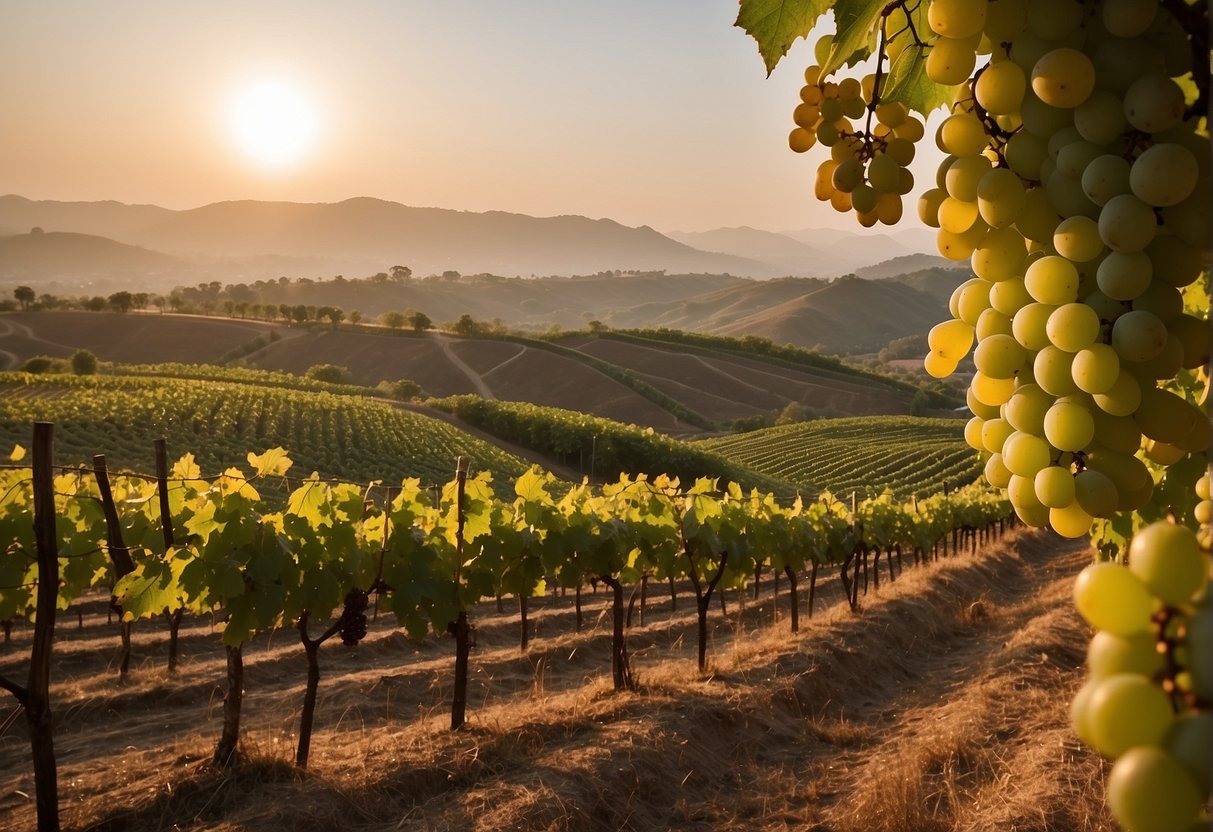
As you look towards the future, the Indian Wine Industry stands on the brink of significant transformation. Technological advancements and evolving consumer preferences are set to redefine winemaking in India.
Innovation and Technology in Indian Viticulture
Innovation and technology are key drivers of change in Indian viticulture.
The introduction of temperature-controlled fermentation tanks and drip irrigation systems are enhancing the quality and consistency of Indian wines.
Precision agriculture is enabling vintners to optimize grape quality, leading to better wines and positioning India as a producer of fine wines on the world stage.
Projected Trends and Consumer Behavior
Trend analysis indicates a surge in wine consumption in India, with a younger demographic beginning to prefer wine over traditional spirits.
Table grapes and wine grape varieties are benefitting from this shift.
As Indian consumers become more knowledgeable about wines, their behavior is steering the market towards more sophisticated and varied wine offerings.
Expect to see a greater focus on wine tourism and a rising interest in homegrown Indian wine labels.
Frequently Asked Questions

In this section, you’ll find answers to some common inquiries about India’s burgeoning wine scene.
Which state is renowned for its production of wine in India?
Maharashtra is well-known for its wine production, thanks to its optimal climate and terrain for viticulture, which has fostered a thriving wine industry.
What is the name of the region often referred to as the wine capital of India?
Often dubbed the wine capital of India, Nashik in Maharashtra has emerged as a central hub for wine enthusiasts and producers alike.
Can you list some of the top vineyards to visit in India?
You would enjoy visiting vineyards like Sula Vineyards and Grover Zampa Vineyards, which are among the top places known for their remarkable wine experiences.
What is the typical price range for Indian wines?
Indian wines can be quite affordable, typically ranging from INR 400 to INR 2000, which offers a good variety for both novices and connoisseurs.
How significant is the wine industry in India compared to other countries?
While still in a nascent stage, India’s wine industry is growing at a rapid pace; however, it is relatively small when compared to the more established wine-producing countries.
Could you tell me about the unique characteristics of Indian wines compared to other regions?
Indian wines offer a unique blend of flavors. They are often characterized by bold spices and tropical fruit notes. These flavors reflect the country’s diverse climate and soil conditions.
